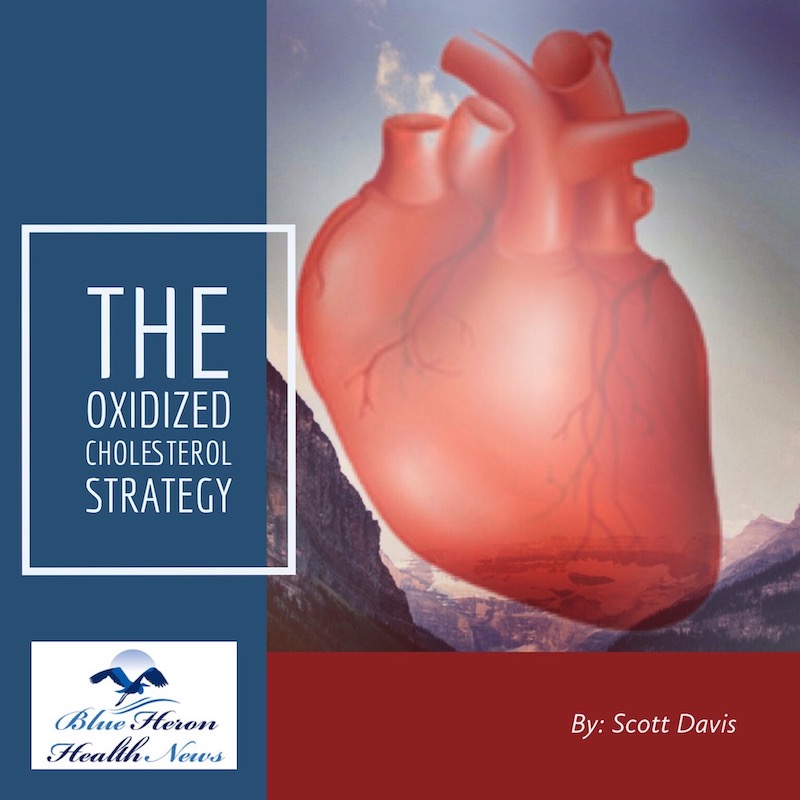
The Oxidized Cholesterol Strategy By Scott Davis is a well-researched program that reveals little known secret on how to tackle cholesterol plaque. This program will tell you step by step instructions on what you need to completely clean plaque buildup in your arteries so as to drop your cholesterol to healthy level. It also helps to enhance your mental and physical energy to hence boosting your productivity.
What role does oxidized cholesterol play in the body?
Oxidized cholesterol, particularly oxidized low-density lipoprotein (ox-LDL), plays a detrimental role in the body, primarily in the development and progression of cardiovascular diseases. Unlike regular cholesterol, which is essential for various physiological functions, oxidized cholesterol is harmful and contributes to the formation of atherosclerotic plaques in the arteries. Here’s an overview of the role oxidized cholesterol plays in the body:
1. Initiation of Atherosclerosis:
- Endothelial Damage: Oxidized LDL is more reactive than regular LDL cholesterol and can damage the endothelium, the thin layer of cells that lines the interior of blood vessels. This damage is an early event in the development of atherosclerosis, a condition characterized by the buildup of plaques in the arterial walls.
- Inflammatory Response: The presence of oxidized LDL triggers an inflammatory response in the arterial walls. The immune system recognizes oxidized LDL as harmful and responds by sending white blood cells, particularly macrophages, to engulf and remove it. However, this process also contributes to inflammation within the arterial walls, which plays a central role in atherosclerosis.
2. Formation of Foam Cells and Plaques:
- Macrophage Engulfment: Macrophages attempt to clear oxidized LDL from the bloodstream by engulfing it. However, when macrophages take up too much oxidized LDL, they transform into foam cells. These foam cells accumulate within the arterial walls, becoming a key component of fatty streaks, the earliest form of atherosclerotic plaques.
- Plaque Development: Over time, the accumulation of foam cells, along with other substances such as smooth muscle cells, collagen, and cellular debris, leads to the development of atherosclerotic plaques. These plaques narrow and harden the arteries, reducing blood flow and increasing the risk of cardiovascular events.
3. Plaque Instability and Rupture:
- Vulnerability of Plaques: Oxidized LDL contributes to the instability of atherosclerotic plaques. These plaques are often covered by a fibrous cap that can become thin and weak due to ongoing inflammation and oxidative stress. Oxidized LDL exacerbates this process by promoting the release of enzymes that break down the fibrous cap.
- Rupture and Thrombosis: If the fibrous cap of a plaque ruptures, the contents of the plaque, including oxidized LDL and other pro-inflammatory substances, are exposed to the bloodstream. This exposure can trigger the formation of a blood clot (thrombus) at the site of the rupture. A thrombus can further block the artery, leading to a heart attack, stroke, or other serious cardiovascular event.
4. Promotion of Chronic Inflammation:
- Sustained Inflammatory Response: The ongoing presence of oxidized LDL in the arterial walls perpetuates a chronic inflammatory response. This inflammation not only contributes to the progression of atherosclerosis but also plays a role in the development of other chronic diseases, such as rheumatoid arthritis and metabolic syndrome.
- Immune System Activation: Oxidized LDL acts as a pro-inflammatory agent, continuously activating the immune system and promoting the release of cytokines and other inflammatory mediators. This chronic inflammation can lead to further vascular damage and a higher risk of complications.
5. Contribution to Endothelial Dysfunction:
- Impaired Nitric Oxide Production: Oxidized LDL interferes with the production of nitric oxide (NO) by the endothelium. Nitric oxide is a crucial molecule that helps maintain vascular health by promoting vasodilation (widening of blood vessels) and reducing blood pressure. Reduced NO availability due to oxidized LDL can lead to endothelial dysfunction, a key factor in the development of hypertension and atherosclerosis.
- Increased Vascular Permeability: Oxidized LDL can increase the permeability of the endothelium, allowing more lipids and inflammatory cells to penetrate the arterial walls. This further contributes to plaque formation and vascular damage.
6. Role in Other Chronic Diseases:
- Metabolic Syndrome and Diabetes: Oxidized LDL is associated with insulin resistance and metabolic syndrome, a cluster of conditions that increase the risk of heart disease, stroke, and type 2 diabetes. The chronic inflammation and oxidative stress promoted by oxidized LDL can exacerbate insulin resistance and contribute to the development of diabetes.
- Chronic Kidney Disease: Oxidized LDL is also implicated in the progression of chronic kidney disease (CKD). It can contribute to vascular damage in the kidneys, leading to impaired kidney function and an increased risk of cardiovascular complications in individuals with CKD.
7. Impact on Overall Cardiovascular Health:
- Increased Cardiovascular Risk: The presence of oxidized LDL is strongly associated with an increased risk of cardiovascular diseases (CVD), including coronary artery disease, heart attacks, strokes, and peripheral artery disease. Oxidized LDL is considered a key factor in the pathogenesis of these conditions.
- Prognostic Marker: Elevated levels of oxidized LDL in the blood can serve as a prognostic marker for cardiovascular risk. Measuring oxidized LDL levels may help identify individuals at higher risk of developing CVD, allowing for early intervention and targeted prevention strategies.
8. Potential Therapeutic Targets:
- Antioxidant Therapies: Given the harmful effects of oxidized LDL, antioxidant therapies aimed at reducing oxidative stress and preventing LDL oxidation are being explored. Antioxidants like vitamins C and E, polyphenols, and flavonoids may help neutralize free radicals and protect LDL from oxidation.
- Statins and Other Lipid-Lowering Agents: Statins, which are commonly prescribed to lower LDL cholesterol levels, may also reduce the formation of oxidized LDL by lowering overall LDL levels. Other lipid-lowering agents, such as PCSK9 inhibitors, may also have a role in reducing oxidized LDL and its associated risks.
Conclusion:
Oxidized cholesterol, particularly oxidized LDL, plays a harmful role in the body by contributing to the development and progression of atherosclerosis and other cardiovascular diseases. It promotes endothelial damage, inflammation, plaque formation, and plaque instability, all of which increase the risk of heart attacks, strokes, and other serious health conditions. Managing oxidized cholesterol through lifestyle changes, antioxidant-rich diets, and appropriate medical interventions is crucial for maintaining cardiovascular health and reducing the risk of related diseases.

The Oxidized Cholesterol Strategy By Scott Davis is a well-researched program that reveals little known secret on how to tackle cholesterol plaque. This program will tell you step by step instructions on what you need to completely clean plaque buildup in your arteries so as to drop your cholesterol to healthy level. It also helps to enhance your mental and physical energy to hence boosting your productivity.